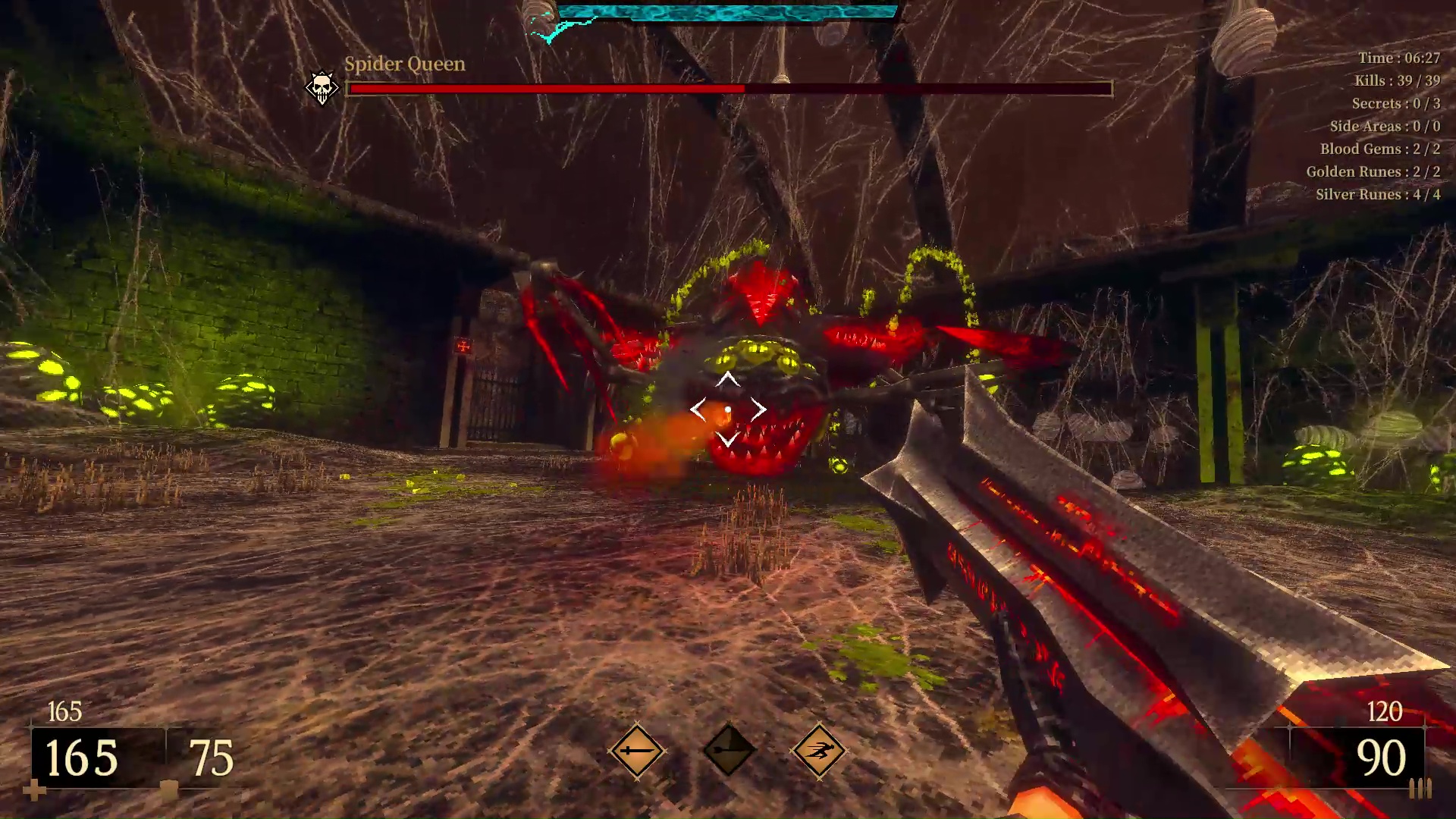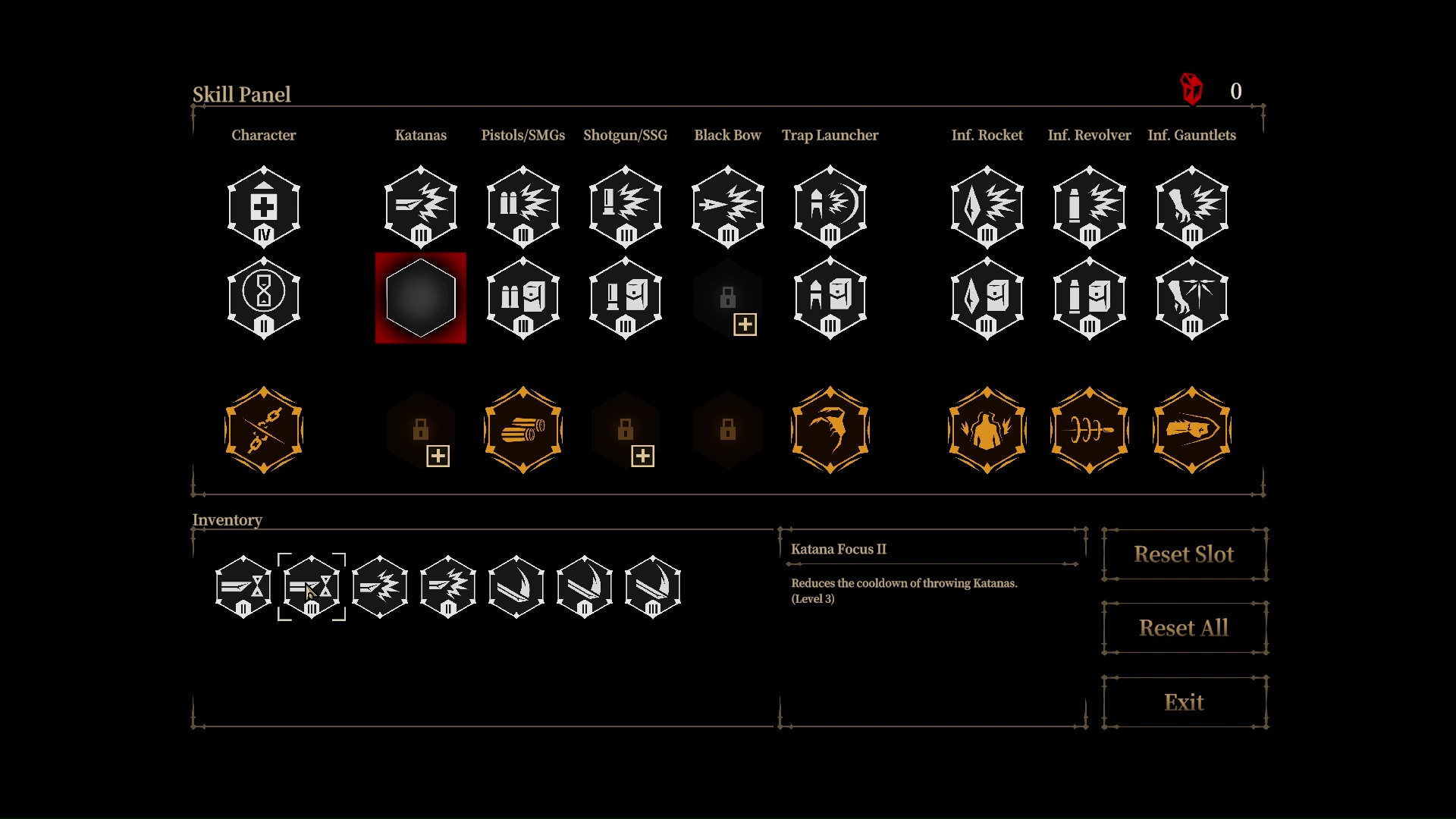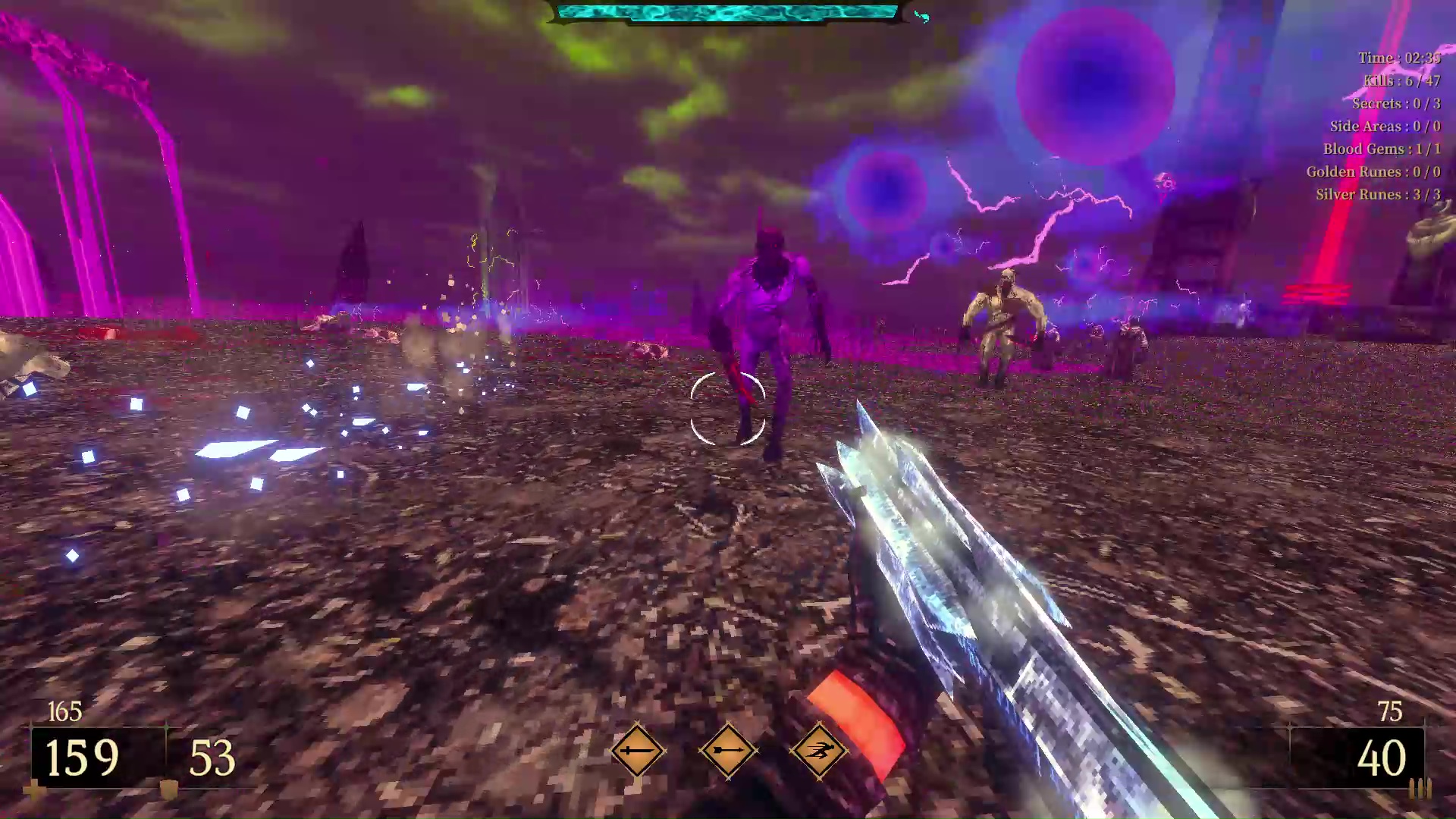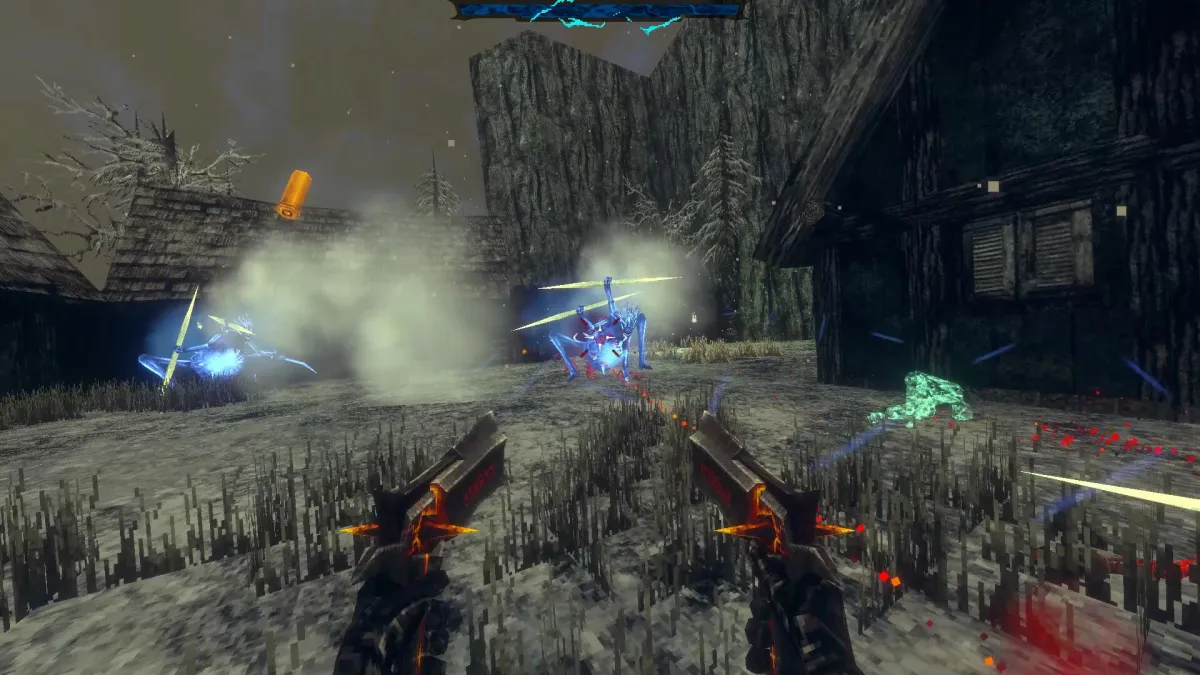Whenever it is a damp, drizzly November in my soul, whenever I find myself involuntarily pausing before coffin warehouses, then I account it high time to get a new “boomer shooter” as soon as I can. With a philosophical flourish Cato throws himself upon his sword; I quietly take to murdering the forces of pixel hell with a rocket launcher.
As part of that particular coping mechanism, I picked up a Humble Bundle last year with a bunch of indie ‘90s-styled FPSes in it. That was the first time I’d heard of Dread Templar, then in Steam Early Access, but it was in the same bundle as Dusk and Amid Evil. I figured it had to be worth a look. It ended up pulling me in, but almost despite itself.
Dread Templar is a near-plotless FPS in the spirit of the original Quake, where your antihero, only known as the Templar, has busted into hell in search of an initially nameless revenge. The few times you’re shown your character, he’s got a trenchcoat, dual katanas, and a constant scowl, like he just saw The Matrix last week and it hit him right where he lived.
The first few levels of Dread Templar are a decent overall introduction that nails a lot of the basic requirements of a throwback shooter. It’s fast, gory, and uncomplicated, with basic weapons and a forgiving difficulty curve. The first enemies you fight are just goons with guns and/or claws, but it isn’t long before you run into more and greater varieties of demon.
Also, spiders. Man, does this game have some spiders. If you don’t like spiders, this is not the game for you.

My initial issue with Dread Templar was that it was competent but not really that interesting. The first campaign is set in a procession of crypts, caves, and catacombs in a lovely shade of Quake brown, and your first few weapons are really textbook stuff: pistols, shotguns, submachine guns, and a big black-and-red hell gun that is, nonetheless, a rocket launcher.
It does have a few of its own quirks, like an air-dash and the ability to trigger “bullet time” in short bursts, which is part of what kept me going. The later campaigns also get much more creative; a particular highlight is a level that’s set in a surreal, ruined library that’s full of Escherian platforms.
Even so, Dread Templar struck me as being Just Another Retro-Style FPS for a while, until I started looking things up. I immediately learned that I’d been playing the game wrong.

Most of the levels in Dread Templar are riddled with well-hidden secrets, which range from reasonably obvious to the sort of deliberate obscurity that long-time Doom players sometimes call “wall-humping.” It’s hard to imagine finding some of the game’s secrets without spending hours hitting the interact button while standing next to every weird stretch of wall.
Many of these secrets give you special upgrade tokens that you can use to customize the Templar’s arsenal and style of play. You can convert the basic shotgun into an ice cannon, your rocket launcher into a swarm of homing missiles, or the SMGs into dual “Hellscreams” that can empty 600 rounds into a single target in less than three seconds. The trap launcher’s particularly fun here, as you can turn its mines into something like a demonic, auto-targeting ballista tower.
That flexibility turned out to be the single best thing about Dread Templar. You can respec your character for no cost at any altar, so you can freely experiment with new builds and specialized loadouts for specific encounters.

The problem with this system is that, on a blind run, many of the tokens you need to make the system work are so well hidden that you’d be lucky to find half of them on a blind run. Your reward for exploration and creative thinking in Dread Templar isn’t just upgrades; it’s making the game worth playing at all.
It’s a similar complaint to one that I had with 2020’s Doom Eternal, albeit for different reasons. Both Eternal and Dread Templar deliberately start you at their lowest point, then treat basic quality-of-life bonuses that should be baseline as early steps along their upgrade paths. Eventually, you accumulate enough firepower and extra abilities that both games come into their own, but it’s a longer process than it had to be.
Once you’ve gotten enough gear to open up some build flexibility in Dread Templar, it’s a decent retro FPS, particularly in its later campaigns. My primary takeaway, however, is that its best feature is also its biggest flaw.






Published: May 2, 2023 11:00 am